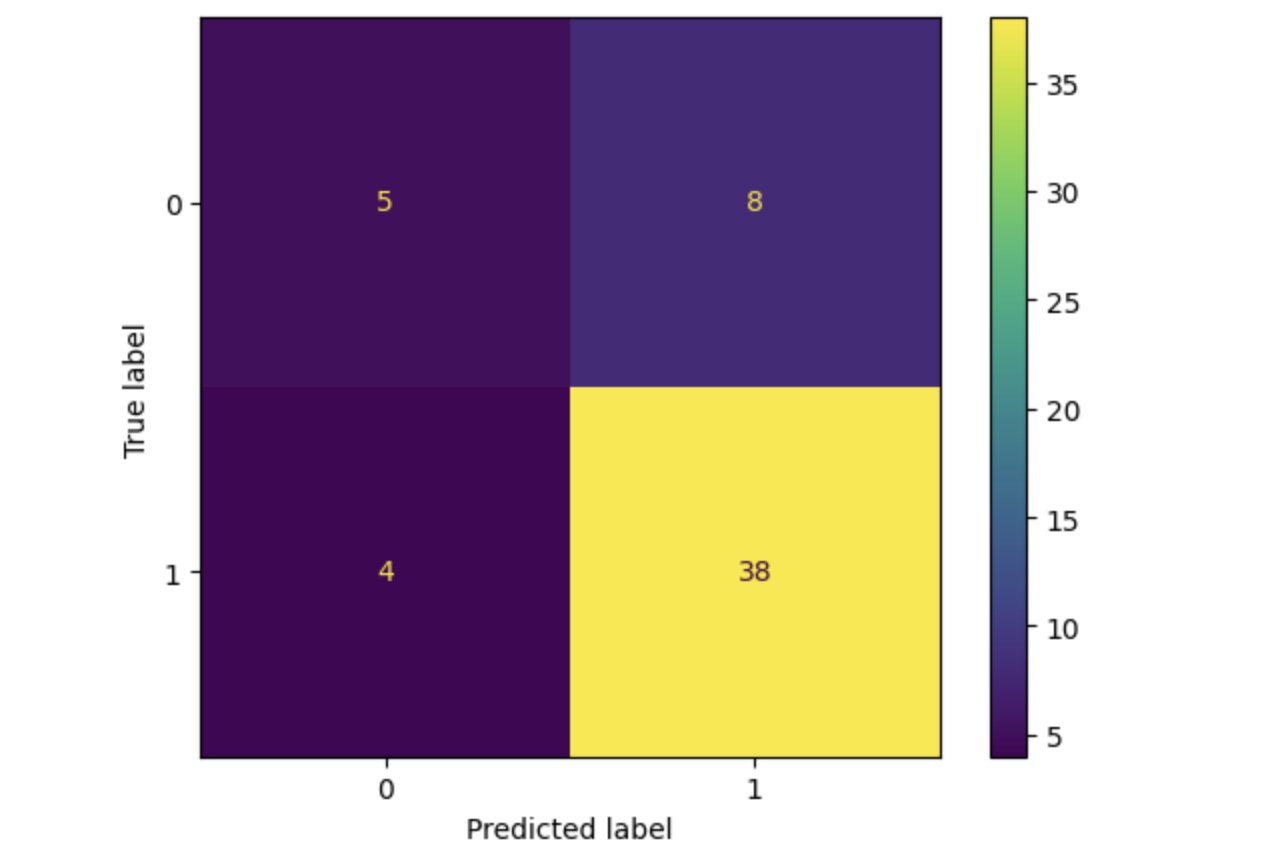XGBoost - Python 实现
在本章中,我们将使用 XGBoost Python 模块在泰坦尼克号数据上训练 XGBoost 模型。我们生成此模型的主要目标是通过考虑年龄、性别和舱位等变量来预测乘客是否幸存。此外,我们还将修改模型的超参数。
先决条件
在使用 Python 构建 XGBoost 模型之前,必须满足以下条件 −
Python 环境:需要 Python 3.6 或更高版本。您可以使用 PyCharm、Visual Studio Code 或 Jupyter Notebook 等库来编写和运行 Python 代码。
库:应安装数据操作、可视化和机器学习所需的 Python 库。我们将在模型中使用的库是 scikit-learn、xgboost、matplotlib、pandas、numpy 和 seaborn。
数据集:具有特征和二分类或多类分类的因变量的有效数据集。数据集需要采用 pandas 可以快速加载的格式,例如 CSV。
拥有必要的工具、库、数据集和基本知识将帮助您使用 Python 构建 XGBoost 模型。
XGBoost 实现
以下是您需要遵循的步骤 −
步骤 1:安装所需的库
我们需要一些库来实现此实现,因此如果您尚未安装,请借助以下命令安装它们 −
# 安装必要的库 pip install matplotlib pip install numpy pip install pandas pip install scikit-learn pip install seaborn pip install xgboost
步骤 2:导入所需的库
现在您必须导入库 −
# 以下是导入 import matplotlib.pyplot as plt import numpy as np import pandas as pd import seaborn as sns import xgboost as xgb from sklearn.metrics import accuracy_score, confusion_matrix, ConfusionMatrixDisplay from sklearn.model_selection import GridSearchCV, train_test_split
步骤 3:加载泰坦尼克号数据集
本课程将使用可从 Kaggle 和其他网站下载的泰坦尼克号数据集。因此,请下载 titanic.csv 以获取泰坦尼克号数据集。您需要将 CSV 文件上传到 Jupyter Notebook。此时将数据读入 pandas DataFrame −
# 加载数据集
titanic_df = pd.read_csv('/Python/Datasets/titanic.csv')
# 显示数据集的前几行
print(titanic_df.head())
输出
这将产生以下结果 −
PassengerId Survived Pclass \
0 1 0 3
1 2 1 1
2 3 1 3
3 4 1 1
4 5 0 3
Name Gender Age SibSp \
0 Braund, Mr. Owen Harris male 22.0 1
1 Cumings, Mrs. John Bradley Florence Briggs Th... female 38.0 1
2 Heikkinen, Miss. Laina female 26.0 0
3 Futrelle, Mrs. Jacques Heath (Lily May Peel) female 35.0 1
4 Allen, Mr. William Henry male 35.0 0
Parch Ticket Fare Cabin Embarked
0 0 A/5 21171 7.2500 NaN S
1 0 PC 17599 71.2833 C85 C
2 0 STON/O2. 3101282 7.9250 NaN S
3 0 113803 53.1000 C123 S
4 0 373450 8.0500 NaN S
步骤 4:数据预处理
在训练模型之前,我们需要对数据进行预处理。此步骤包括处理缺失数据、编码分类变量和选择特征。查找任何缺失的值 −
# 检查缺失值 print(titanic_df.isnull().sum())
输出
这将生成以下结果 −
PassengerId 0 Survived 0 Pclass 0 Name 0 Gender 0 Age 177 SibSp 0 Parch 0 Ticket 0 Fare 0 Cabin 687 Embarked 2 dtype: int64
填写空白或删除它们 −
# 删除有缺失值的行 titanic_df = titanic_df.dropna()
现在我们将选择必要的特征并编码分类变量:
# 选择特征和目标变量
X = titanic_df[['Pclass', 'Gender', 'Age', 'SibSp', 'Parch', 'Fare']]
y = titanic_df['Survived']
# 编码分类变量"性别"
X.loc[:, 'Gender'] = X['Gender'].map({'male': 0, 'female': 1})
步骤 5:训练和评估模型
将数据分为训练集和测试集后,我们现在将训练模型并评估其有效性。这里将数据拆分如下 −
# 将数据拆分为训练集和测试集 X_train, X_test, y_train, y_test = train_test_split(X, y, test_size=0.3, random_state=0)
接下来,我们需要将数据转换为 XGBoost 模型的 DMatrix 格式 −
# 将训练集和测试集中的"性别"列转换为数字
X_train['Gender'] = X_train['Gender'].map({'male': 0, 'female': 1})
X_test['Gender'] = X_test['Gender'].map({'male': 0, 'female': 1})
# 确保没有缺失值,数据类型为数字
X_train = X_train.astype(float)
X_test = X_test.astype(float)
# 现在转换为 DMatrix 格式
dmatrix_train = xgb.DMatrix(data=X_train, label=y_train)
dmatrix_test = xgb.DMatrix(data=X_test, label=y_test)
然后我们将训练模型 −
# 设定学习目标
learning_objective = {'objective': 'binary:logistic'}
# 训练模型
model = xgb.train(params=learning_objective, dtrain=dmatrix_train)
之后我们必须评估模型 −
# 进行预测
test_predictions = model.predict(dmatrix_test)
round_test_predictions = [round(p) for p in test_predictions]
# 计算准确度
accuracy = accuracy_score(y_test, round_test_predictions)
print(f'Accuracy: {accuracy:.2f}')
输出
这将创建以下结果 −
准确度:0.80
步骤 6:超参数调整
我们现在将使用 GridSearchCV 实现超参数调整,以找到我们的 XGBoost 模型的理想参数。因此设置参数网格 −
# 定义参数网格
params_grid = {
'learning_rate': [0.01, 0.05],
'gamma': [0, 0.01],
'max_depth': [6, 7],
'min_child_weight': [1, 2, 3],
'subsample': [0.6, 0.7],
'n_estimators': [400, 600, 800],
'colsample_bytree': [0.7, 0.8],
}
定义并设置 XGBoost 分类器和 GridSearchCV −
# 定义 XGBoost 分类器 classifier = xgb.XGBClassifier() # 设置 GridSearchCV grid_classifier = GridSearchCV(classifier, params_grid,scoring='accuracy', cv=5) grid_classifier.fit(X_train, y_train)
确定最合适的参数后,我们将评估模型:
# 获取最佳参数
best_parameters = grid_classifier.best_params_
print("最佳参数:", best_parameters)
# 使用最佳模型进行预测
grid_test_preds = grid_classifier.predict(X_test)
# 计算准确率
grid_test_accuracy = accuracy_score(y_test, grid_test_preds)
print(f'GridSearchCV Accuracy: {grid_test_accuracy:.2f}')
输出
这将导致以下结果 −
最佳参数:{'colsample_bytree': 0.7, 'gamma': 0, 'learning_rate': 0.01, 'max_depth': 7, 'min_child_weight': 1, 'n_estimators': 600, 'subsample': 0.7}
GridSearchCV Accuracy: 0.78
在这里我们将绘制混淆矩阵。
# 绘制混淆矩阵 cm = chaos_matrix(y_test, grid_test_preds) disp = ConfusionMatrixDisplay(confusion_matrix=cm, display_labels=grid_classifier.classes_) disp.plot() plt.show()
输出
这将导致以下结果 −

总结
我们在本章中使用 Titanic 数据集来解释如何实现 XGBoost 模型。因此,为了提高模型的性能,您可以研究替代数据集。


